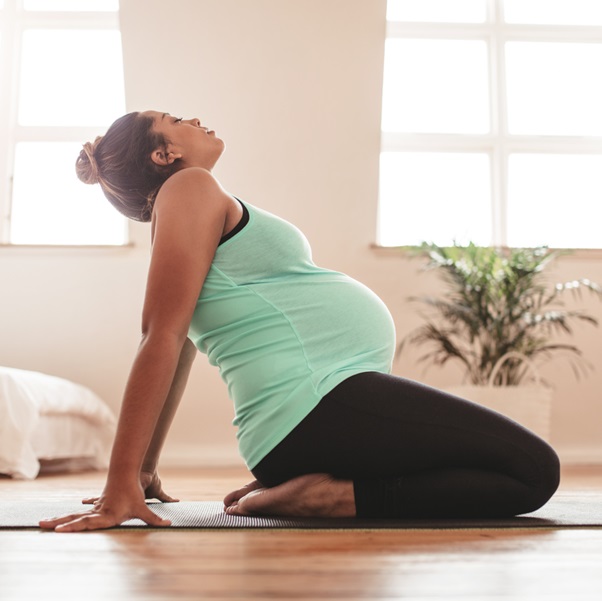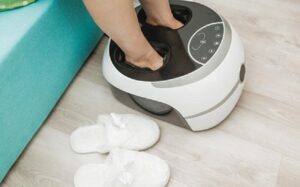Insider Secrets of Preventing Postpartum Belly: Tips for New Mothers

Welcoming a new baby into the world is a joyous occasion, but many new mothers are concerned about the changes their bodies undergo during and after pregnancy. One common concern is the postpartum belly, which can be accompanied by pregnancy stretch marks. Fortunately, there are insider secrets and effective tips that new mothers can utilise to prevent and minimise postpartum belly issues.
Knowing About Pregnancy Stretch Marks and Postpartum Belly
Postpartum belly refers to the abdominal protrusion that many women experience after giving birth. This is often due to the stretching of abdominal muscles and ligaments during pregnancy, as well as the accumulation of excess fat and fluid retention. Additionally, pregnancy stretch marks, also known as striae gravidarum, are another common concern among new mothers. These marks appear as red or purple streaks on the skin due to the stretching of the dermis layer during pregnancy.
1. Maintain a Healthy Diet and Exercise Routine During Pregnancy
One of the most effective ways to prevent postpartum belly and pregnancy stretch marks is to maintain a healthy lifestyle during pregnancy. Eating a balanced diet rich in fruits, vegetables, lean proteins, and whole grains provides essential nutrients for both mother and baby while promoting healthy weight gain. Additionally, engaging in regular exercise, under the guidance of a healthcare professional, can help strengthen abdominal muscles, improve posture, and promote overall well-being during pregnancy.
2. Stay Hydrated and Moisturise the Skin
Proper hydration is crucial for maintaining skin elasticity and preventing pregnancy stretch marks. Drinking an adequate amount of water each day helps keep the skin hydrated from within. Additionally, applying moisturising creams or oils to the abdomen and other areas prone to stretch marks can help keep the skin supple and reduce the likelihood of developing stretch marks during pregnancy.
3. Use Supportive Maternity Wear
Investing in supportive maternity wear, such as belly bands or maternity belts, can help provide additional support to the abdominal muscles and alleviate discomfort during pregnancy. These garments help distribute the weight of the baby more evenly, reducing strain on the lower back and abdomen. Wearing supportive maternity wear can also help prevent excessive stretching of the skin and muscles, contributing to a smoother postpartum recovery.
4. Practise Gentle Abdominal Exercises Postpartum
After giving birth, new mothers can benefit from gentle abdominal exercises to help strengthen the core muscles and improve abdominal tone. However, it’s essential to start slowly and gradually increase intensity as strength and endurance improve. Pelvic floor exercises, such as Kegels, are particularly beneficial for restoring pelvic floor strength and preventing postpartum belly issues. Consultation with a healthcare provider or a certified postnatal fitness specialist is recommended before starting any exercise program postpartum.
5. Embrace Body-Positive Mindset and Self-Care Practices
Above all, new mothers need to embrace a body-positive mindset and prioritise self-care practices during the postpartum period. Pregnancy and childbirth bring significant changes to the body, and it’s normal for women to experience fluctuations in weight, body shape, and skin appearance. Practising self-compassion, seeking support from loved ones, and focusing on holistic well-being can help new mothers navigate the physical and emotional challenges of the postpartum period with confidence and resilience.
6. Gradual Return to Physical Activity
After childbirth, new mothers must ease back into physical activity gradually. While exercise is beneficial for overall health and well-being, pushing too hard too soon can strain the abdominal muscles and hinder postpartum recovery. Start with low-impact exercises such as walking, yoga, or swimming, and gradually increase intensity as strength and endurance improve. Listen to your body and prioritise rest and recovery as needed to support optimal healing and prevent exacerbating postpartum belly issues. Consulting with a healthcare provider or a postnatal fitness specialist can help new mothers develop a safe and effective exercise plan tailored to their individual needs and recovery timeline.
In conclusion, preventing postpartum belly and pregnancy stretch marks requires a combination of healthy lifestyle habits, proper skin care, supportive garments, gentle exercises, and a positive mindset. By incorporating these insider secrets and effective tips into their postpartum routine, new mothers can promote abdominal recovery, enhance skin elasticity, and embrace the transformative journey of motherhood with grace and confidence.

Contact Orchard Clinic today to explore personalised solutions for preventing and managing postpartum belly concerns. Prioritise your well-being and reach out to our experienced team for expert guidance and support.





